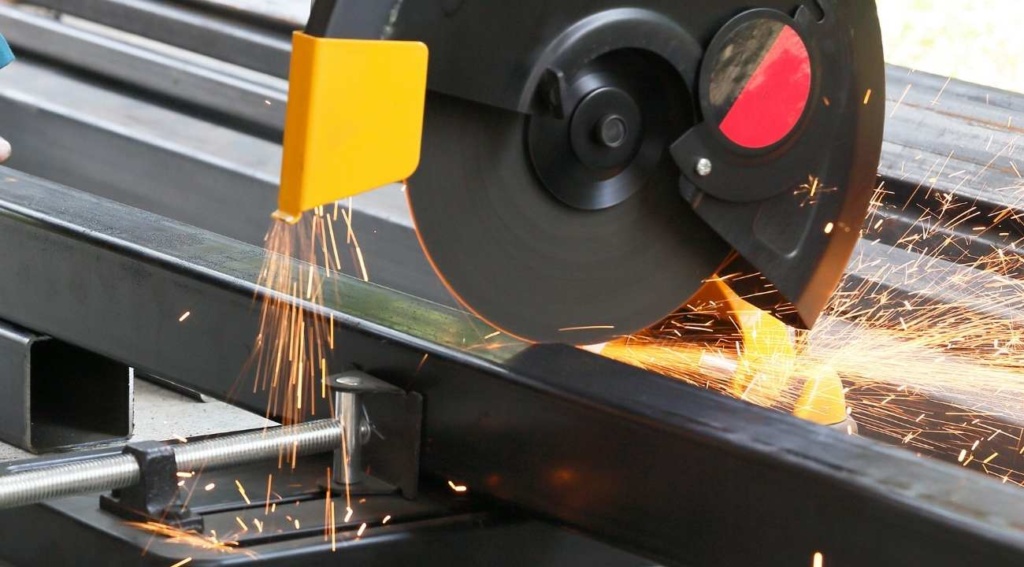Table of Contents
Everyone reading this article must have used a circular saw for their wood and metalworking. Well, A circular saw is a portable mechanical tool that runs by a motor used for cutting many types of materials such as wood, plastic, metal, and masonry. It can be mounted on the table or handheld, depending on the job you’re working on. Circular saws are very popular among DIY enthusiasts and professionals for their high sawing capacity and precision.
So whether you’re at your home or construction site, a circular saw will make sure to bring curvilinear and straight cuts on various types of materials. Though there are two types of circular saw available in the market, one manual and the other one is electric, regular users and professionals will go with the electric ones as they are more complex and offer extremely precise sawing.
Since wood or metal work needs high accuracy and precision, enthusiasts and professionals look for the eligible saw blade for their existing circular saw, which will set up their game at the jobsite. A blade is the main component of a circular saw, which enhances its performance and picks up the slack. So whether you’re a cabinet maker or carpenter, you must find the appropriate saw blade for your circular saw to achieve the best output.
And if you’re up to choosing the right kind of circular saw blades for your woodworking and other projects, it can be pretty difficult. So look no more as in this article, we have discussed choosing the right circular saw blade by showing you different types of circular saw blades and their verdicts so that you can choose the right one unhesitantly for your definite project.
Rip-Cut Blades
Starting the most common blade used on a circular saw is the Rip cut blade. These kinds of blades are specially designed to cut along the wood grain. The blades usually have few teeth, perhaps around 24, some have as low as 14 teeth. Having a limited number of large and straight teeth, these blades allow you to do the aggressive cutting and enable you to make more significant cuts. Rip cut blades are good for making fast and rough cuts.

Cross-Cut Blades
Having more teeth than a ripping blade with a shallower gullet, cross-cutting blades are used to cut across the wood grain to ensure clean and safe cutting. Although they cut more slowly than the ripping blades, they produce a smoother and cleaner result. A crosscut blade has a higher number of teeth, and you’ll often find them having up to 80 teeth, which allows you to make more accurate cuts through wood.
Combination Blades
In order to cut both rips and crosscuts, you can pick the combination blades. These blades can cut in both directions, making them good for various uses. In addition, combination blades come with a higher number of teeth, allowing a smoother cut. When you don’t have both of the two circular saw blades at your job site, then a combination blade will assist you in every possible way. But if you’re seeking a blade for a more specific job, you should go for the dedicated one for the job.
Plywood Blades
As the name suggests, plywood blades are specially designed for fine material and will help minimize the wood splintering as you cut. In addition, a plywood blade has a high number of teeth, usually in the range of 40 or more, allowing you to make the finest cuts with minimal damage to plywood or wood. So if you’re going to do some general cuttings on plywood, you should use these plywood blades on your circular saw.

Diamond Blades
Made out of steel with synthetic diamonds sprinkled throughout them, diamond blades can cut through tough and rigid materials like concrete, stones, and tiles. These Diamond blades are specially built for use in masonry works.
Dado Blades
Dado blades are the kind of blade that will help you cut dados or grooves into wooden materials. These dado blades come in two different types, one of them lets you cut out the groove and removes the waste materials, while the other one works as a simple circular blade allowing you to change the depth of the cut.
Thin Kerf Blades
In simple words, thin-kerf blades make narrow cuts on your wood and are designed for small wooden objects. These thinner blades are most commonly used for cutting dimensional lumber and are often used by pencil manufacturers. However, any DIY or professional worker can use this saw blade on his regular circular saw because it requires less power to cut through while producing minimal sawdust and resulting in more usable wood.
Metal Cutting Blades
There are different categories of metal cutting blades. If you’re up to cutting aluminum and other softer metals like lead, brass, and bronze, you should go for the Carbide tipped non-ferrous blades. But if you have a cutting project of ferrous metal like hard steel in hand, you should go for an abrasive metal cutting blade.

Continuous Rim Blades
Next up, continuous rim blades, the unique circular saw blades with no teeth, differentiate these rim blades from all the other standard blades of a circular saw. A continuous rim blade is ideal for cutting unique tiles without teeth. These blades also have another category called turbo rim blades, which have almost similar qualities but are suitable for cutting your concrete or brick material.
Finish Blades
The finished blade is a special type of circular saw blade designed to make clean and extra-smooth cuts on the wood parts that will be visible after the job is done. These blades have a huge number of small teeth which leave behind very smooth and splinter-free cuts. Finish blades help you make precise cuts on your wood without damaging it a bit.
Final Verdict
So, we’ve seen various types of saw blades so far, and each has its own beneficial aspects. And at the end of the day, the decision is totally up to you on which saw blade you will choose. This will depend solely on the type of your work.
Circular saw blades are designed to be used on circular saws to ensure smooth and safe cuts on wood, metal, and masonry. As your wood or metal working needs precision and accuracy, you must choose the best blade for your existing circular saw. However, when it’s time to purchase, you’ll have no shortage of good quality options. We hope this article will help you make the right decision in choosing the right circular saw blade.










Leave a Comment